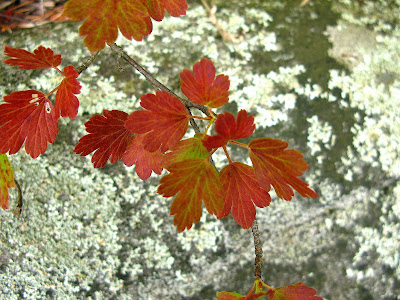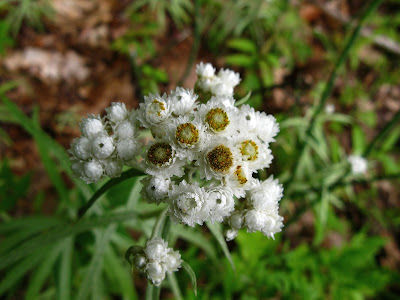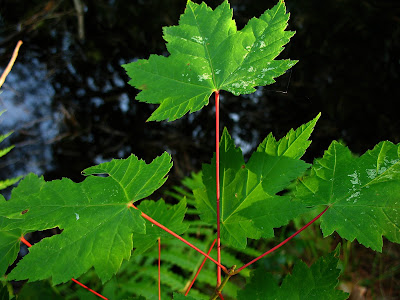Talk about blessings! I have made two of the most wonderful nature friends through this blogging business, and both of them joined me today for a paddle. And the day was like one that was made in Paradise: clear and sunny, just a light breeze but calm among the coves, and not a trace of rain or thunder. Not one. Just perfect.
Ellen Rathbone, who writes the blog Adirondack Naturalist as well as nature and gardening columns for Adirondack Almanack, and Sue Pierce, who writes the blog Water Lily, both joined me today on the river. Having these two along was like having a whole library of nature knowledge along for the ride. Any question I had about birds or bugs or plants or trees, all I had to do was holler. And I was so pleased to show them my haunts of the Hudson, a remarkable habitat that supports more varieties of flora and fauna in a concentrated area than any I've ever known. And it's also astoundingly beautiful.

Here's a frieze of reeds, standing tall amid masses of Pickerelweed, and standing out against the shadowy forest.

And here's a stand of Steeplebush, the rosy spires so splendid against the dark smooth water, with mossy rocks aglow across the bay.
The pristine white of Arrowhead was peppered with tiny black flies, who were relishing the abundance of its pollen. Or is it something else they're after? I should have asked my companions.
A quick revisit to "my" Purple Fringed Orchis proved that the blooms had fully opened. And that no one had trampled or picked it.

Blooming along the banks today was Boneset (Eupatorium perfoliatum), a not-particularly-beautiful flower that has a distinctive leaf structure. The lower leaves, which grow opposite each other, are joined into one, which is pierced by the stem in the middle. This appearance suggested to folks in the past that these leaves might have power as a poultice for broken bones, causing them to knit faster. Hence the name Boneset. Too bad it doesn't really work.

Ellen looks pretty happy here. Why shouldn't she? She's on vacation!
Sue had to leave by noon to go to work, but Ellen had the whole afternoon to spend with me on the river, since she's on vacation this week and next from her job as a naturalist/educator with the Adirondack Visitors' Interpretive Center in Newcomb. She has also turned over her Adirondack Almanack columns to me for the duration. Aaargh! Having to write to a deadline has brought back stressful memories of the years I worked editing periodicals. And just when I need to head to the river to relieve that stress, deadlines are calling me home to my computer. And away from my own blog. If you wonder where I went, come look for me Sundays and Wednesday and Saturday over at the Almanack. Just click on that link above. It's a great site. Go there and you can find Ellen's columns about all kinds of fascinating stuff, from porcupines to good garden poo. Plus lots of other Adirondack news.


















































